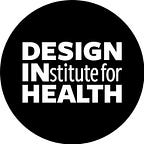Will Systems Design Make Us Healthier?
By Natalie Privett, Ph.D.
Decades of unbridled and escalating dysfunction have had a drastic effect on our individual health, and the pandemic has only served to highlight and exacerbate that dysfunction. The health care system is failing us and the consequences are dire.
There is a duality in this dysfunction — some of it is felt very personally, at the level of each individual human. Yet most of this dysfunction derives from dynamics that occur at a systems level, hindering the ability for any single person to affect change.
In reviewing the state of our dysfunction, we see a list of familiar statistics that are each systemically produced and yet often experienced individually.
We don’t live as long as people in other countries.
The US has the shortest life expectancy among comparable countries among all ages (even infants).¹ ²
It costs an outrageous amount.
Yet we pay much, much more for our care — nearly $11,000 per person, 42% more than the next country, Switzerland.³ We spend so much, but where is it going? By and large, health sector profit margins are growing (even in the pandemic)⁴ ⁵ far outpacing price increases by physicians.⁶
Health is a privilege of a few, not the right of everyone (inequity).
Your zip code is the greatest predictor of how long you will live,⁷ with life expectancy varying up to 20 years between locations 5 miles apart.⁸ Importantly, health inequity intersects with myriad other inequitable systems, all reinforcing one another (e.g., education, housing, food, transportation, policing and criminal justice).
It’s really hard to get and stay healthy, especially for the most vulnerable.
One in ten adults reported that they delayed or did not get care because of cost, and the numbers are higher for those without insurance, experiencing poverty, or who identify as Hispanic or Black.⁹ Cost and insurance are not the only barriers to health; barriers can extend into the social, cultural and geographic realms.
And so are those still only in training for career in medicine.
Medical students are three times more likely to die by suicide as their same-age peers and suicide is the leading cause of death among medical residents.¹²
Let’s recap. The health system is not working for:
- Our nation,
- Our communities,
- Our historically underinvested neighborhoods,
- Our most vulnerable,
- Our parents,
- Our kids,
- Our own wellbeing.
These are all indicators of how the system is failing us systemically, both collectively and individually. From patients and caregivers to physicians and providers, the health system serves neither the humans receiving, nor providing care.
“We have failed to fundamentally shift how health is produced and perpetuated in the systems we endure.”
Where do we go from here?
Health is a systemic challenge with personal consequences.
It’s complex, interrelated, messy, intimate. It is a challenge at many levels: globally where countries, markets, and geopolitics intertwine; nationally and regionally where taxpayer dollars are spent; locally where communities are thriving (or not); and at the individual level where you have figure out where you will spend your limited paycheck: food, rent, electricity, or health insurance.
The social determinants of health framing is just one illustration of the systemic nature of a single individual’s health as it intertwines broad and complex determinants — factors that influence health — over an entire lifetime.
Health is a systemic challenge that requires a systemic response.
Systemic challenges are:
- Deep rooted: embedded in the social, economic, geographic, and cultural fabric of our lives;
- Persistent: as evidence is clear that we are neither shifting health nor health care; and
- Connected: where the global, local, and individual intermingle often unexpectedly.¹³
Inherent in such systemic challenges are fundamental questions about values, goals, and the tactics to realize them. Systemic challenges cannot be solved by piecemeal or incremental efforts, and neither can our current crisis of health in the United States be solved by process improvement projects and incremental reform.
But where there is systemic challenge, there are systemic opportunities.
How do we turn health care challenges into systemic opportunities?
Systems Design lets us seize opportunities to be healthier both individually and collectively by elevating both system and human needs. What is Systems Design?
Systems design (also referred to as Systemic Design or Systems-Oriented Design) shapes an intersection between systems thinking and human centered design thinking. In Systems Design, we leverage design thinking to center us on lived experience, to make sense of the problems before us by deeply understanding human perspectives and needs. We also leverage systems thinking to make sense of complexity, understanding the problems before us by framing them in the context of our interconnected, dynamic world.
Taking these together is Systems Design, and in practicing design in this way:
- We develop both a deeper and broader understanding of problems and solutions.
- We see people as both a whole person and a part of larger dynamics and systems.
- We can both center on the person and see the systems that shape their experience.
Systems Design is the capability to design the systemic responses that our health challenges require. And it is what is critical to truly realize health and health care for everyone.
In upcoming posts, we’ll dig into the practice of Systems Design and share examples from our work here at the Design Institute for Health. Subscribe to the feed to delve more deeply.
